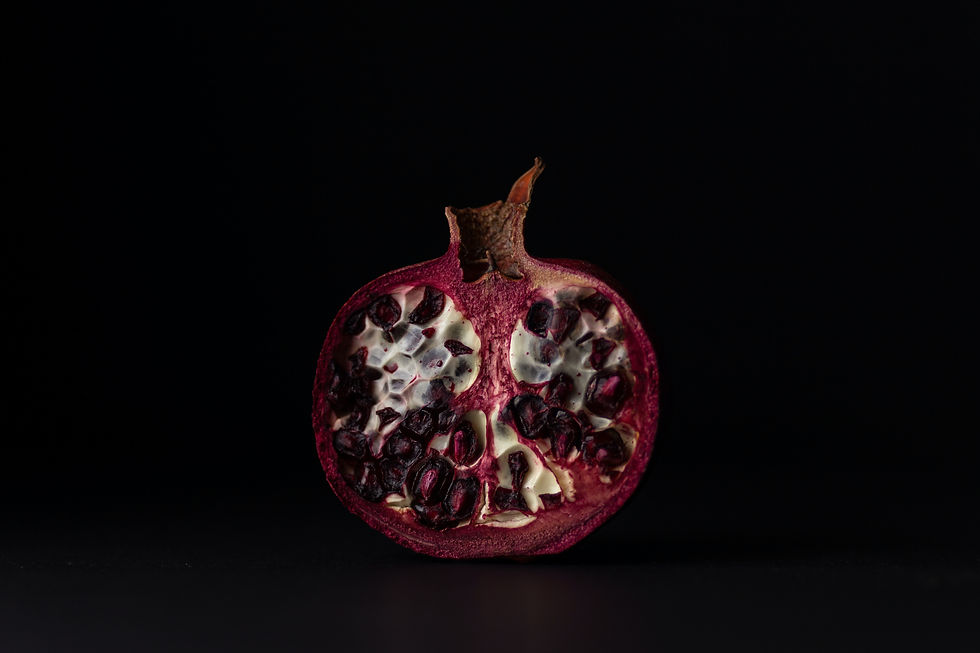How TikTok Poetry Replicates Harmful Biases
- J.K. Petrie
- Dec 24, 2023
- 3 min read

If you use TikTok and enjoy poetry, you’ve probably had poetry slideshows come across your for you page. TikTok’s algorithm has pushed certain poetic themes: pomegranates, dogs, cannibalism metaphors, and more. These are beautiful themes. Poets have used all of these and more for decades. But what happens when they’re fed to an algorithm that produces an endless loop until a trend has been drained?
I take issue with beginners, especially young poets, being made the butt of a joke. There is a problem with elitism with PoetryTok, both inside and outside of the community. (By the way, we're all internet nobodies producing self-indulgent poetry, at the end of the day: Poetry has never been a respected art. We're all clowns at the same circus.)
That being said, there is still an issue with the way poetry is produced on TikTok. It doesn’t just boil down to how “cringeworthy” someone’s art is: It’s a matter of the messages being sent, many of which are harmful. Pomegranate poetry is the example that I will use for the rest of this post, as it is the most recent cause of controversy on PoetryTok: and, additionally, it is the strongest example of this phenomenon.
Pomegranates are a symbol of fertility, passion, and purity. Greek mythology has also led artists to use pomegranates as a symbol of the rape of Persephone. By extension, artists often use them to symbolize sexual assault, femininity, and cannibalism (the fruit’s redness and messy juice is often tied to images of flesh and blood.)
As the algorithm has fed itself (cannibalized itself, even), pomegranate poetry has shifted from feminist metaphor to stereotypical depictions of women as soft, round, wholly good, and men as hard, rough, wholly bad. Similarly, it has become white-centric and trans-exclusionary, prioritizing European and cisgender perspectives of femininity above all else. As with all TikTok trends, the artists who first cultivated the poetry catch the brunt of critique. There is a cycle at play with many pieces of art, on TikTok: a marginalized artist creates a piece, that piece is misappropriated, overused, and/or used in bad faith, then it quickly falls out of fashion. In the aftermath, the original piece is regarded as what was “annoying” the entire time rather than the misappropriation of the piece. (Think of FKA Twigs’ “Cellophane”, or more famously, Mitski’s “Strawberry Blond.”)
We are seeing that consequence right now. As poetic metaphors fall out of vogue just as quickly as they gained popularity, the original curators of those ideas do, as well. This includes classic works from West Asian artists, who have been writing poetry about pomegranates as a connection to their own culture for centuries.
Additionally, conforming to the algorithm creates oversaturation of the same ideas. As long as there’s certain key phrases in a poem that match other popular videos, those poems will get views. It becomes repetitive, and it's no fun for anybody involved.
Above all else, however, it is important to remember young artists who are just discovering the magic of writing their own poetry. By nature, poetry penned by young teens will be derivative, inarticulate at times, not polished nor concise. There is a divide to be made, here: younger TikTok users who resonate with themes that they may be seeing for the first time, and users who are creating poetry with misappropriated themes out of bath faith, a lack of care, and/or poor judgment. We can’t throw the baby out with the bathwater.
Overall, beginners who are just discovering creative writing and/or poetry need space to grow and come into their own, even if it means copying what they see, at first. At the same time, there needs to be a reform in how the PoetryTok community holds one another accountable. Misogyny, Eurocentrism, and trans exclusion is never acceptable: neither is tearing down anyone who wants to use a popular symbol in good faith.
What do you think?





Comments